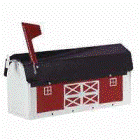Agricultural Research Division of IANR

Panhandle Research and Extension Center: Press Releases
Date of this Version
Spring 2009
Abstract
Outside of weeds, pests and disease, drought is the most important factor holding back crop yields. But it also is a normal, if unpredictable, occurrence in the Great Plains.
Drought reduces a crop’s yield, quality, and often market value. The severity of yield reduction depends on the timing and duration of drought stress. Drought’s impact can be amplified by other stresses, such as heat, temperature, disease, and poor soils.
In western Nebraska, irrigation not only mitigates drought’s effects, but also provides greater profitability and income stability than dryland farming. However, in recent years, groundwater declines due to overuse or drought have resulted in pumping restrictions in many areas of Nebraska, and years of drought have reduced water storage in reservoirs, leading to allocations for surface irrigators. This has necessitated a shift to limited irrigation or a return to dryland crop production in some areas. The prolonged drought has magnified the resulting yield losses.


Comments
Online at: http://panhandle.unl.edu/web/panhandlerec/meeting_challenge_11